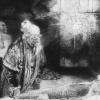Архив "ядрени оръжия"; дискусии
-
Последна активност
-
Руско-украинската война 2022-2024 година. 1 2 3 4 143
От Р. Теодосиев, in Руско-украинската война 2022 година.
- 3557 мнения
- 183678 прегледa
-
- 984 мнения
- 123901 прегледa
-
- 114 мнения
- 4352 прегледa
-
- 0 мнения
- 187 прегледa
-
- 127 мнения
- 5361 прегледa
-
-
Последно разглеждащи 0 Потребители
- No registered users viewing this page.




Recommended Posts
Напиши мнение
Може да публикувате сега и да се регистрирате по-късно. Ако вече имате акаунт, влезте от ТУК , за да публикувате.